Cost Of Setting Up An EV Charging Station In India: Requirements & ROI
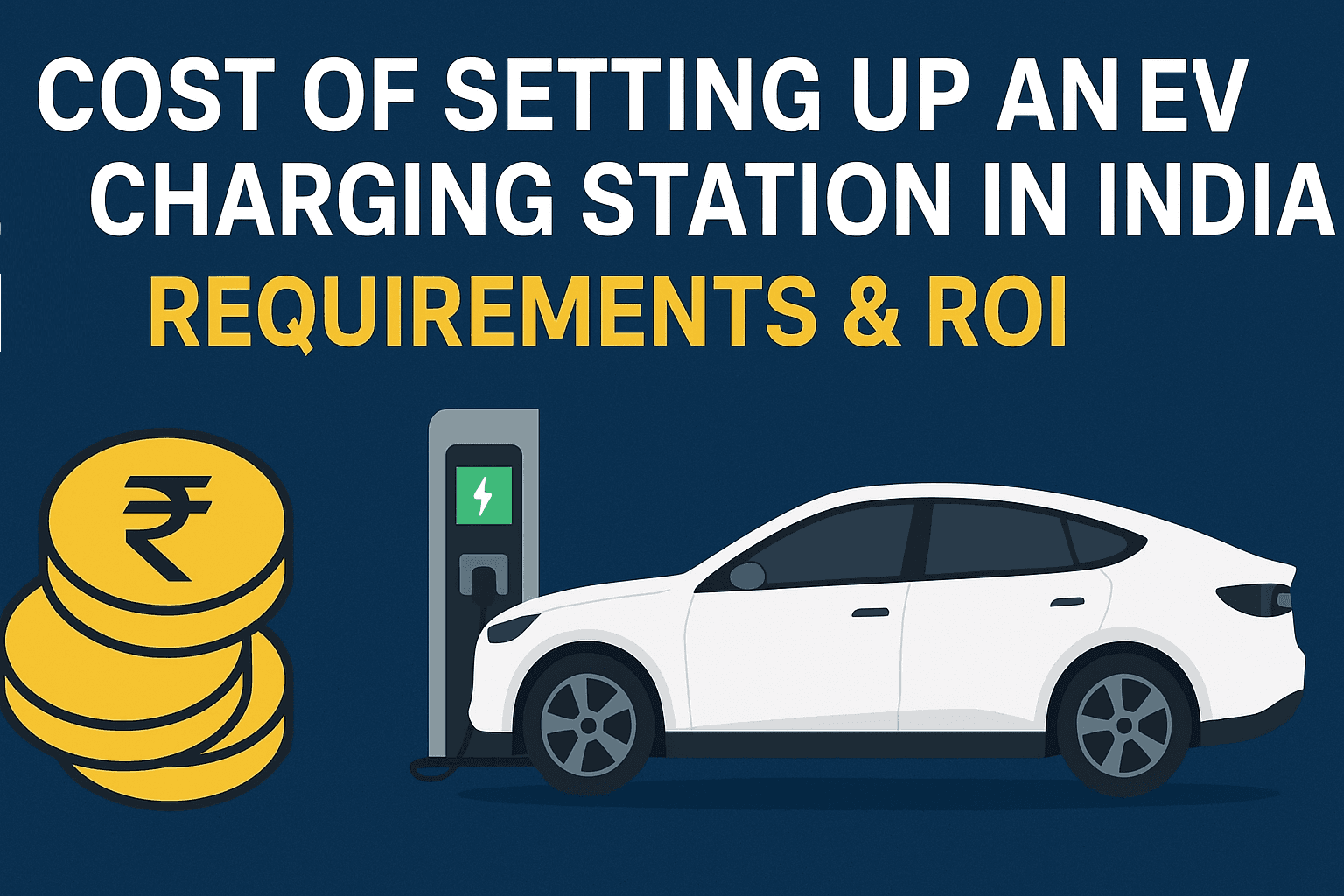
- Typical DC fast-charger costs between Rs 7–12 lakh; high-power units cost more
- You don’t need a license for a public charger, but strict technical standards apply.
- With decent traffic and pricing, payback can be ~18–36 months; utilisation is the key lever.
Introduction
Thinking of setting up an EV charging station in India? This straightforward guide breaks down real setup costs, permits and technical requirements, business models, and a clear ROI example in crisp, no-nonsense information.

Electric vehicle charging isn’t just about sockets and plugs — it’s a small business, a public service and an infrastructure play rolled into one. If you’re reading this, you want clear numbers, the legal basics, and a realistic sense of how quickly the money comes back. Let’s get to it.
1) What types of chargers and their typical cost:
Chargers come in broad types:
- Slow / Wallbox (AC 3.3kW to 7kW) — best for homes, offices and long-stay parking.
- Fast AC (7–22 kW) — useful for malls, workplaces, and hotels.
- DC Fast Chargers (25–150+ kW) — highway plazas, fleet depots, quick top-ups for cars.

Cost ballpark:
- Basic AC point: Rs 30,000 – Rs 1,00,000.
- Mid-tier 22 kW AC: Rs 1–2 lakh.
- DC fast chargers (30–60 kW): Rs 7–12 lakh each (equipment + basic installation).
- High-power DC (120 kW+): Rs 20 lakh+ depending on civil work, transformer, and grid upgrades.
PS: These are ranges — site-specific civil works, transformers, cable runs and grid upgrades can push costs up.

2) What you must have (technical & legal checklist)
- Land/parking: safe, well-lit, convenient access and adequate bay space.
- Power supply: coordination with the local DISCOM for a dedicated meter and load sanction; sometimes transformer/upgrades needed.
- Charger hardware + OCPP-compliant software: for billing, back-end management and interoperability.
- Payment & user interface: RFID, app or UPI integration for frictionless payments.
- Safety & standards compliance: follow Ministry of Power / CEA technical standards and safety norms. Public charging is a de-licensed activity (you do not need a special power supply licence), but you must comply with technical and performance standards and get the necessary local approvals/clearances.

3) Government support and incentives:
India has been progressively funding and incentivising public charging — from FAME-era support to larger, targeted schemes (PM E-DRIVE and state-level incentives). Central and some state schemes now provide capital subsidies, grant windows or reimbursements for infrastructure components — especially for highway fast chargers and public nodes. These programmes reduce upfront risk and accelerate payback for high-utilisation locations. Check the latest state policy where you plan to install; incentives and application processes vary.
Also Read: India’s First Tesla Supercharger Goes Live In Mumbai: All You Need To Know
4) Operating costs to budget for:
- Electricity (energy cost) — your highest recurring cost. Public charging tariffs vary by state and operator — expect a wide band (public AC often Rs 6–12/kWh; public DC fast charging commonly Rs 16–25+/kWh to the customer, while your procurement cost from DISCOM will be lower but varies). Tariff rules are governed by state commissions; typical policy caps also exist (e.g., supply tariff not more than average cost of supply + 15%).
- O&M & staffing — periodic maintenance, software fees, site attendant, insurance.
- Connectivity and payment gateway fees — software and transaction commissions.
- Land lease/property cost — the silent killer of your margin in premium locations.
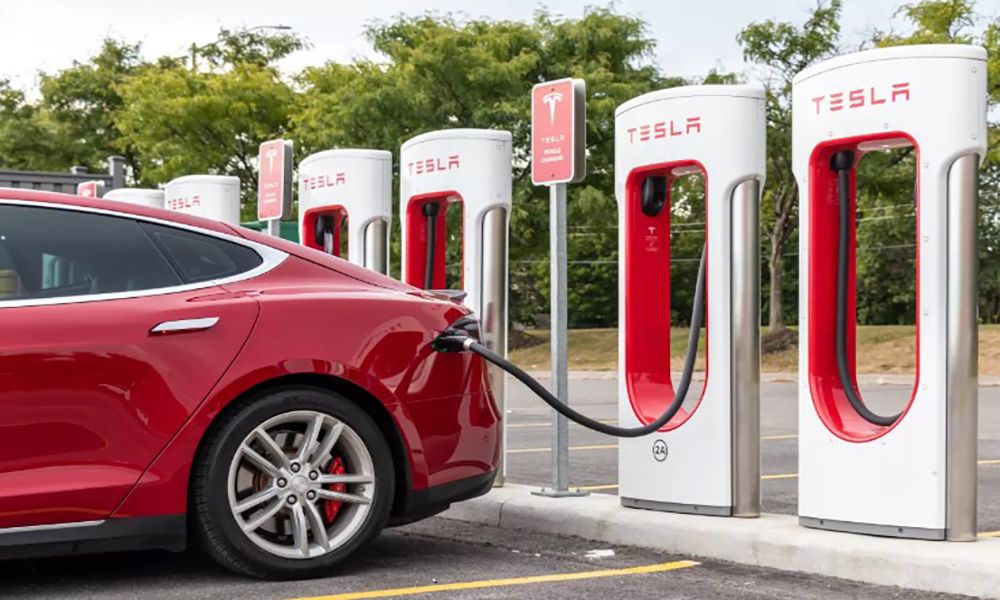
5) Business models
- Owner-operator (pay-per-use): You buy/install chargers and charge customers per kWh or per minute. Good for malls, highways, fleet depots.
- Operator-as-a-service (OaaS): Vendor installs and operates chargers; you (landowner) get a revenue share or fixed rent. Low CAPEX for the site owner; lower upside.
- Fleet-only / subscription: Dedicated to taxis/logistics; higher utilisation but needs contractual throughput.
- Cross-sell model: Pair charging with café/retail – increases dwell time and non-charging revenue.

6) Realistic ROI example
Numbers matter. Here’s a simple, conservative worked example so you can test the math for your site.
Assumptions:
- One 50 kW DC fast charger: equipment Rs 8,00,000 + installation & civil Rs 2,00,000 → Total CAPEX = Rs 10,00,000. (mid-range real-world figure)
- You sell electricity at Rs 24 / kWh to the customer.
- Your procurement (DISCOM) cost is Rs 8 / kWh.
- Average energy delivered: 100 kWh / day (moderate traffic site).

Calculations:
- Monthly revenue = 24 × 100 × 30 = Rs 72,000.
- Monthly energy cost = 8 × 100 × 30 = Rs 24,000.
- Monthly gross margin = 72,000 − 24,000 = Rs 48,000.
- Payback = CAPEX / monthly gross margin = 10,00,000 / 48,000 ≈ 20.8 months (≈ 1.75 years).
This is a simplified example (doesn’t include staff, software fees, taxes, land rent, downtime or financing costs). But it shows how utilisation and pricing drive payback. Industry reports and operators commonly see payback windows from ~1.5–4 years, depending on location and scale.
Also Read: Tata Motors Opens 10 EV 'Mega Chargers' Across India
7) What improves your returns:
- Increase utilisation — fleet contracts or colocations (food court, petrol pump) are gold.
- Dynamic pricing/premium for speed — charge per minute or premium for ultra-fast charging.
- Lower your electricity procurement — time-of-day tariffs, dedicated supply or rooftop solar + storage.
- Multiple chargers per site — once grid supply is sanctioned, incremental chargers are cheaper.
- State incentives — tap capital subsidies and reimbursements wherever available.

8) Common pitfalls
- Underestimating grid upgrade costs (transformer, cabling).
- Picking incompatible connectors or non-OCPP hardware (locks you to one vendor).
- Putting chargers in low-footfall spots expecting app-based discovery to fix everything.
- Ignoring user experience: lighting, signage, easy payment and shelter matter.

9) Quick step-by-step to get started
- Site survey: footfall, parking time, approach and grid capacity.
- Talk to the DISCOM: provisional load sanction, meter type, tariff class.
- Choose hardware + CMS (OCPP recommended).
- Apply for applicable state/central incentives (if any).
- Install, test, and launch with simple signage and an introductory tariff or fleet tie-up.
- Measure utilisation daily — adjust pricing, promos or partnerships.
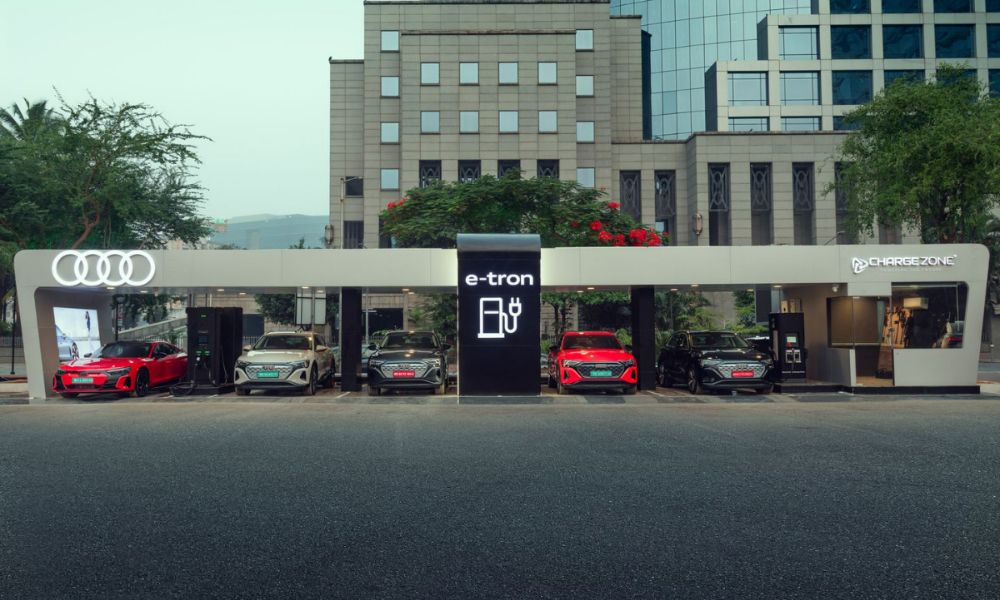
10) FAQs
Q: Do I need a licence to operate a public charging station?
A: No special licence — public charging is de-licensed — but you must meet Ministry/CEA technical standards and register with local authorities as required.
Q: Is installing rooftop solar helpful?
A: Yes — solar + smart inverter can cut your effective energy cost and improve margins, especially for daytime sites. Pair with smart billing and net-metering (subject to DISCOM rules).
Q: Which charger gives the fastest payback — AC or DC?
A: It depends on utilisation. DC units cost more but command higher per-kWh prices and quicker turnover. For low-utilisation sites, AC points often make more sense.
Trending News
 9 mins readBest Chauffeur Driven Cars Under Rs 20 Lakh
9 mins readBest Chauffeur Driven Cars Under Rs 20 Lakh 4 mins readBest Driver’s Cars In India Under Rs 50 Lakh
4 mins readBest Driver’s Cars In India Under Rs 50 Lakh
Latest News
 Jafar Rizvi | Nov 28, 2025Honda Amaze Secures 5 Stars In Bharat NCAP Crash TestsThe sub-compact sedan scored 28.33/32 points in Adult Occupant Protection and 40.81/49 points in Child Occupant Protection.1 min read
Jafar Rizvi | Nov 28, 2025Honda Amaze Secures 5 Stars In Bharat NCAP Crash TestsThe sub-compact sedan scored 28.33/32 points in Adult Occupant Protection and 40.81/49 points in Child Occupant Protection.1 min read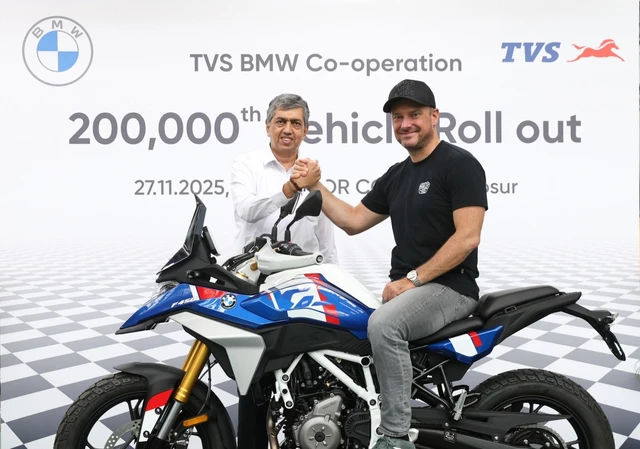 car&bike Team | Nov 27, 2025BMW F 450 GS Production Begins At TVS PlantTVS Motor Company and BMW Motorrad have announced a landmark achievement of 200,000 units produced under their partnership.1 min read
car&bike Team | Nov 27, 2025BMW F 450 GS Production Begins At TVS PlantTVS Motor Company and BMW Motorrad have announced a landmark achievement of 200,000 units produced under their partnership.1 min read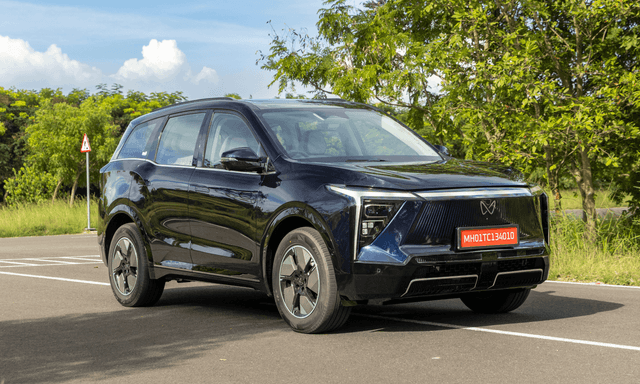 car&bike Team | Nov 27, 2025Mahindra XEV 9S: Variants, Features, Prices ExplainedThe XEV 9S is offered in four variants, with three battery pack options. Here is a rundown of what each variant gets.3 mins read
car&bike Team | Nov 27, 2025Mahindra XEV 9S: Variants, Features, Prices ExplainedThe XEV 9S is offered in four variants, with three battery pack options. Here is a rundown of what each variant gets.3 mins read Bilal Firfiray | Nov 27, 2025Mahindra Introduces New 70 kWh Battery Pack With XEV 9SHere’s everything you need to know about Mahindra’s new battery pack that debuts with the newly launched XEV 9s2 mins read
Bilal Firfiray | Nov 27, 2025Mahindra Introduces New 70 kWh Battery Pack With XEV 9SHere’s everything you need to know about Mahindra’s new battery pack that debuts with the newly launched XEV 9s2 mins read Bilal Firfiray | Nov 27, 2025Mahindra XEV 9s Launched: In PicturesThe third offering from Mahindra’s born EV line-up, the 9s, is a three-row electric SUV launched at Rs 19.95 lakh3 mins read
Bilal Firfiray | Nov 27, 2025Mahindra XEV 9s Launched: In PicturesThe third offering from Mahindra’s born EV line-up, the 9s, is a three-row electric SUV launched at Rs 19.95 lakh3 mins read car&bike Team | Nov 27, 20252025 Ducati Streetfighter V2 Launched In India At Rs. 17.50 LakhThe 2025 Ducati Streetfighter V2 boasts of being the lightest Streetfighter ever created by Ducati with a dry weight of just 175 kg.3 mins read
car&bike Team | Nov 27, 20252025 Ducati Streetfighter V2 Launched In India At Rs. 17.50 LakhThe 2025 Ducati Streetfighter V2 boasts of being the lightest Streetfighter ever created by Ducati with a dry weight of just 175 kg.3 mins read
 Bilal Firfiray | Nov 26, 2025Tata Harrier EV vs Mahindra XEV 9e: Battle Of India’s Electric TitansWhen India made two electric SUVs battle it out, the winner is the buyer. They get a choice to take home what’s best suited for them – and read on to find out which one is better for YOU.1 min read
Bilal Firfiray | Nov 26, 2025Tata Harrier EV vs Mahindra XEV 9e: Battle Of India’s Electric TitansWhen India made two electric SUVs battle it out, the winner is the buyer. They get a choice to take home what’s best suited for them – and read on to find out which one is better for YOU.1 min read Janak Sorap | Nov 19, 2025Hero Xpulse 210 Vs Kawasaki KLX 230 Comparison Review: Dual-Sport DilemmaWith a price difference of just Rs 12,000, which of the two dual-sport motorcycles is meant for you?1 min read
Janak Sorap | Nov 19, 2025Hero Xpulse 210 Vs Kawasaki KLX 230 Comparison Review: Dual-Sport DilemmaWith a price difference of just Rs 12,000, which of the two dual-sport motorcycles is meant for you?1 min read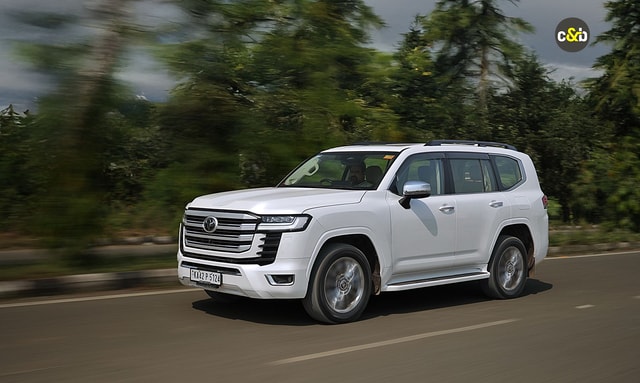 Jaiveer Mehra | Nov 17, 20252025 Toyota Land Cruiser 300 Review: Beast From The EastThe Land Cruiser name may have a long and storied history, but does it fit the bill for an Rs 2 crore-plus SUV in India?13 mins read
Jaiveer Mehra | Nov 17, 20252025 Toyota Land Cruiser 300 Review: Beast From The EastThe Land Cruiser name may have a long and storied history, but does it fit the bill for an Rs 2 crore-plus SUV in India?13 mins read Seshan Vijayraghvan | Nov 17, 2025Kia Syros 1.0 Turbo Petrol: 6000 km Long-Term Review – Final Report!I lived with the Syros for more than 6000 km, over 3 months, and in this final report, I am going to talk about the Pros, the Cons, and everything in between.1 min read
Seshan Vijayraghvan | Nov 17, 2025Kia Syros 1.0 Turbo Petrol: 6000 km Long-Term Review – Final Report!I lived with the Syros for more than 6000 km, over 3 months, and in this final report, I am going to talk about the Pros, the Cons, and everything in between.1 min read car&bike Team | Nov 13, 2025Numeros n-First First Ride Review: Motorbike-Inspired EV ScooterWe test rode the n-First i-max+ in busy Bengaluru roads recently. It’s ability to tackle city roads well and comfortable seats make it a scooter worth a check. Read on to know if it makes sense for you to consider buying it.3 mins read
car&bike Team | Nov 13, 2025Numeros n-First First Ride Review: Motorbike-Inspired EV ScooterWe test rode the n-First i-max+ in busy Bengaluru roads recently. It’s ability to tackle city roads well and comfortable seats make it a scooter worth a check. Read on to know if it makes sense for you to consider buying it.3 mins read





























































































































